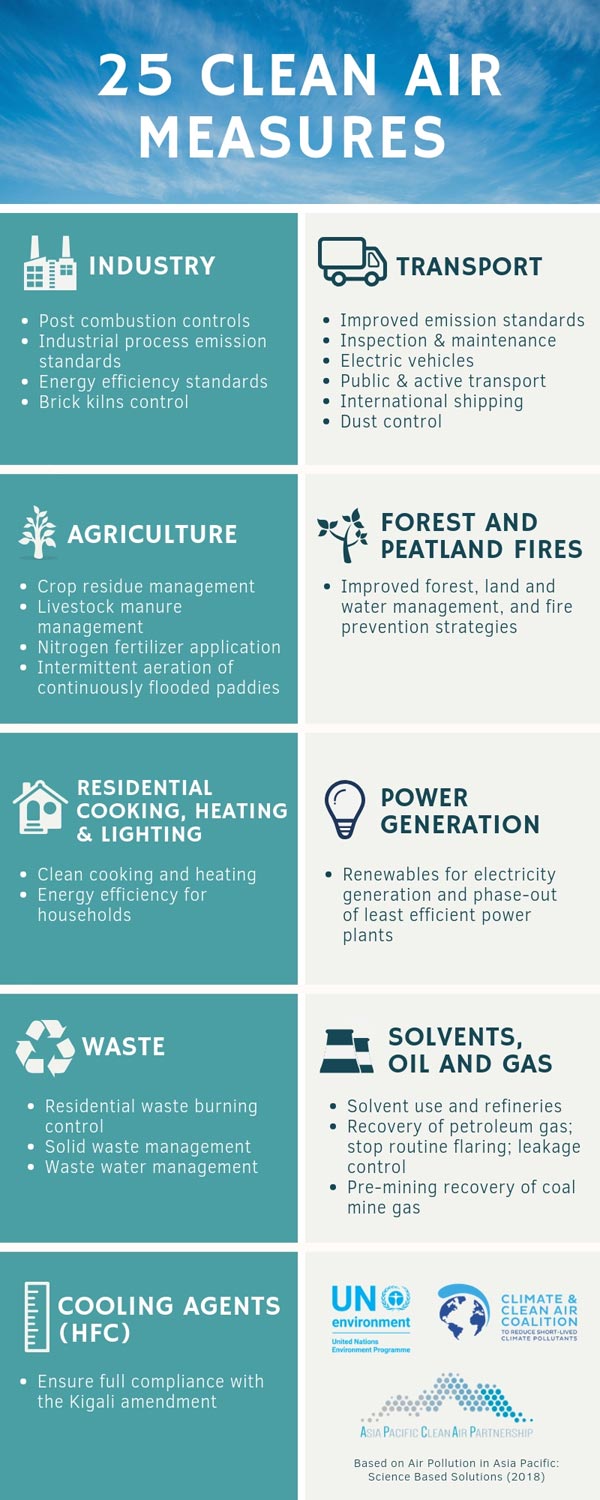201904_340004-en
UNEP Report “Air Pollution in Asia and the Pacific: Science-based Solutions”
About 92 percent of the global population are currently exposed to the levels of air pollution in excess of the World Health Organization (WHO) Air Quality Guideline values. Under the auspices of the United Nations Environment Programme (UNEP), Asia Pacific Clean Air Partnership (APCAP), and Climate and Clean Air Coalition (CCAC), more than 100 researchers, including many affiliated with Japanese and Asian institutes, jointly contributed to a report that would offer policymakers recommendations on how to tackle air pollution issues in Asia and the Pacific. This effort resulted in a publication of the 232-page report in January 2019, entitled “Air Pollution in Asia and the Pacific: Science-based Solutions.”
This new UNEP report consists of three chapters. The first chapter provides scientific background on air pollution in Asia and the Pacific, such as the current state of exposure to air pollutants (for example, PM2.5 and ground-level ozone) and their relation to human health, climate change, agriculture, ecosystems, and the Sustainable Development Goals (SDGs). This chapter makes a case for “why decisive action is needed to combat air pollution in Asia and the Pacific”, setting a stage for the next chapter where modelling scenarios help identify solutions. The quantitative analysis draws upon the Greenhouse Gas and Air Pollution Interactions and Synergies (GAINS) model, developed at the International Institute for Applied Systems Analysis (IIASA) in Austria, and a suite of additional models. The results of the modelling show there exist 25 clean air measures (see Figure) that could allow 1 billion people in Asia to enjoy air quality conforming to the WHO Air Quality Guideline values in 2030, as well as other SDGs, while requiring relatively small social costs in the long-run. Several of these measures are conventional measures that have been already adopted in many parts of this region, but their implementation needs to be strengthened (for example, post combustion controls at power plants and improved emission standards for vehicles). These measures also include next-stage measures that are not yet part of clean air policies in most of this region and are needed to improve air quality levels in accordance with national and international standards (for example, prevention of forest and peatland fires, international shipping, and nitrogen fertilizer application). There are further measures targeted primarily toward development priorities but also offering means of improving air quality (for example, clean cooking and heating and more renewables for power generation). The third and final chapter presents a series of case studies that demonstrate how the 25 measures have been implemented in Asia and the Pacific. It further underlines that implementation is neither easy nor guaranteed. Frequently it will require enhancing the capacity of government agencies to gain compliance with existing policies, enable finance to flow to priority sectors, and work across different stakeholders, agencies, and levels of decision-making.
Reference
UNEP (2019) Air Pollution in Asia and the Pacific: Science-based Solutions
http://www.ccacoalition.org/en/resources/air-pollution-asia-and-pacific-science-based-solutions



